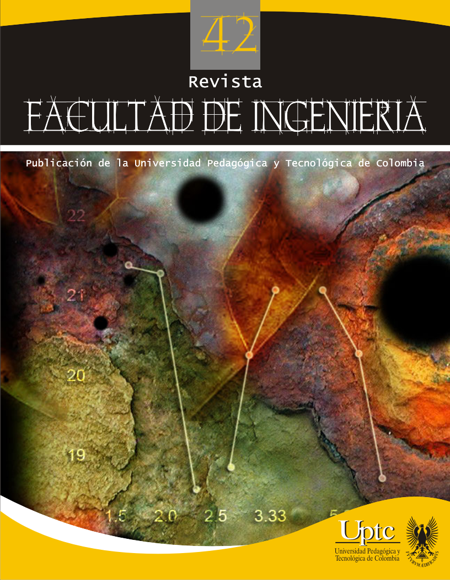Thermal fatigue behavior of new ceramic thermal barrier coatings obtained by the atmospheric plasma spray process

Abstract
The development of new ceramic materials to protect the metallic components against corrosion and oxidation at high temperature, also known as thermal barriers coating (TBC), is of a great interest topic for many industrial and consumer sectors, such as energy generation, aeronautics and automotive industries.
This paper carried out a study on the thermal fatigue behavior of the bond coat, by centering the answer in one of the components which constitute a TBC: the anchor coat. The different TBC components were deposited by an Atmospheric Plasma Spraying (APS) Technique. Microstructure and anchor coat composition along the thermal cycles were studied.
Keywords
Atmospheric Plasma Spraying (APS), Thermal Barrier Coating (TBC), thermal fatigue, zirconia
References
- W. Q. Wang, C. K. Sha, D. Q. Sun et al., “Microstructural feature, thermal shock resistance and isothermal oxidation resistance of nanostructured zirconia coating”, Mater. Sci. Eng. A, vol. 424 (1-2), pp. 1-5, May. 2006. DOI: http://dx.doi.org/10.1016/j.msea.2005.10.025. DOI: https://doi.org/10.1016/j.msea.2005.10.025
- N. K. Huang, “X-ray photoelectron spectroscopy studies on the surface of NiCoCrAlY coatings before and after high-temperature oxidation”, Surf. Coat. Technol., vol. 53 (1), pp. 65-69, Jul. 1992. DOI: http://dx.doi.org/10.1016/0257-8972(92)90104-I. DOI: https://doi.org/10.1016/0257-8972(92)90104-I
- B. G. Mendis and K. J. Hemker, “Thermal stability of microstructural phases in commercial NiCoCrAlY bond coats”, Scr. Mater., vol. 58 (4), pp. 255, Feb. 2008. DOI: http://dx.doi.org/10.1016/j.scriptamat.2007.10.016. DOI: https://doi.org/10.1016/j.scriptamat.2007.10.016
- J. M Guilemany. J. Fernández, J. Navarro et al., “Obtención de recubrimientos autolubricados por proyección térmica de plasma atmosférico (APS) como alternativa a los lubricantes líquidos”, Bol. Soc. Esp. Ceram. Vidr., vol. 44 (4), pp. 211-214, Aug. 2005. DOI: http://dx.doi.org/10.3989/cyv.2005.v44.i4.376. DOI: https://doi.org/10.3989/cyv.2005.v44.i4.376
- P. Fauchais, G. Montavon, and G. Bertrand, “From Powders to Thermally Sprayed Coatings”, Therm. Spray Technol., vol. 19 (1-2), pp. 56-80, Jan. 2010. DOI: http://dx.doi.org/10.1007/s11666-009-9435-x. DOI: https://doi.org/10.1007/s11666-009-9435-x
- M. Gel, E. H. Jordan, Y. H. Sohn et al., “Development and implementation of plasma sprayed nanostructured ceramic coatings”, Surf. Coat. Technol., vol. 146-147, pp. 48-54, Sep. 2001. DOI: http://dx.doi.org/10.1016/S0257-8972(01)01470-0. DOI: https://doi.org/10.1016/S0257-8972(01)01470-0
- R. S. Lima and B. R. Marple, “Thermal spray coatings engineered from nanostructured ceramic agglomerated powders for structural, thermal barrier and biomedical applications: A review”, J. Therm. Spray Technol., vol. 16 (1), pp. 40-63, May. 2007. DOI: http://dx.doi.org/10.1007/s11666-006-9010-7. DOI: https://doi.org/10.1007/s11666-006-9010-7
- P. Carpio, E. Bannier, A. Borrell et al., “Influencia de los parámetros de proyección por plasma atmosférico en recubrimientos de YSZ obtenidos a partir de polvos micro y nanoestructurados”, Bol. Soc. Esp. Ceram. Vidr., vol. 53 (4), pp 162-170, Aug. 2014. DOI: http://dx.doi.org/10.3989/cyv.202014. DOI: https://doi.org/10.3989/cyv.202014
- D. Schwingel, R. Taylor, T. Haubold et al., “Mechanical and thermophysical properties of thick PYSZ thermal barrier coatings: correlation with microstructure and spraying parameters”, Surf. Coat. Technol., vol. 108-109, pp. 99-106, Oct. 1998. DOI: http://dx.doi.org/10.1016/S0257-8972(98)00628-8. DOI: https://doi.org/10.1016/S0257-8972(98)00628-8